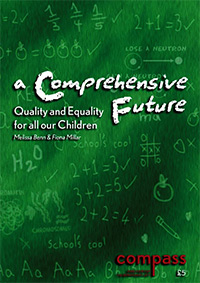Alberta – a high achieving but very different vision for schools
One of the international examples that Michael Gove likes to use in support of his policies is the state of Alberta in Canada – the highest performing English speaking region in the world when it comes to education.
However the policies of the state of Alberta aren’t quite as Mr Gove likes to suggest, as these two films, ‘Lessons from Alberta’ Autonomy, Choice and Competition and Collaboration, Professionalism and Accountability, clearly show. The films were made for Teachers TV by journalist Rhonda Evans and I would recommend setting aside 45 minutes to watch them both.
In Alberta, the state education authorities set out clearly to give parents choice, but in a very different context to that being created by the government here. For a start, they take a bullish pride in the excellence of their state funded and managed provision. Their slogan is ‘Go Public!’. As one official says: ‘If anyone tries to open a charter or private school here, we will open a school next door, show we can do it better and close the private school down’.
Secondly choice is combined with zero selection. All children go to their local schools and if places are still available parents from further away can apply. At the end of the second film, the State Supervisor talks about how he has visitors from all over the world flocking to Alberta to see how they achieve such great results. However he notes that all these ‘visiting’ countries have one feature in common, which is that they segregate their children from a very early age, either through selection into different institutions, or by setting and streaming within schools. There is no such segregation in Alberta until post 16, and the state is seeking to eradicate it there too.
Choice in Alberta also means choice within institutions, as well as between schools. So there is a basic broad curriculum entitlement for all schools with added features in some and high status for non academic , more practical courses. In one scene we see a high achieving student, with plans to study psychology at university, relishing the chance to learn hairdressing.
Choice is also linked to a strong culture of collaboration, rather than competition, between schools. This was instigated by the region’s head teachers who have ‘ tenure’ but move between institutions regularly so they don’t get attached to one particular school and have a common interest in the achievements of all. Schools results are aggregated for public consumption, although individual schools’ results are also available. Most funding is devolved to schools, rather like it is here, but the local authority retains around 10% for central services, much more than many local authorities here would dare to keep.
Finally, and perhaps most importantly, there is a ‘laser like focus’ on teaching and learning, strong teacher accountability, long probationary periods through in which teachers must prove themselves, but heavy investment in training, development and support which is centrally co-ordinated by the local heads and officials working together.
Watch the films and you will see why we are in this country moving in completely the opposite direction – towards more institutional autonomy, more covert selection of pupils, a weakening role of local authorities, and a narrowing of the curriculum in individual institutions.
There is cause to be optimistic though because the Alberta model does provide evidence to support a powerful alternative arguments, for choice and excellence in local schools backed up by collaboration, not competition, no selection and a strong role for local authorities, not in running schools but ensuring the system works fairly for all and that the quality of teaching remains high.
I will be interviewing Rhonda Evans on March 5 at this conference and hope to learn even more about an education system that we could all aspire to.




